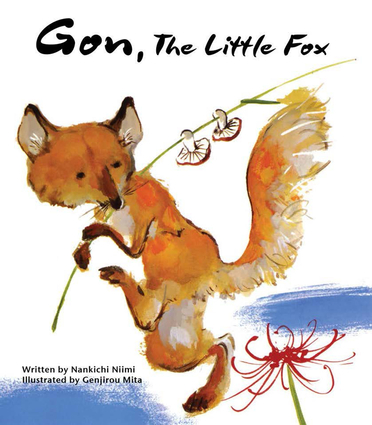Overview
Nankichi Niimi’s stories are filled with humor and pathos, and depict universal themes such as how to have emotional connections and a beautiful way of life even in sorrow
Gon is a little fox. Looking for food he comes to a village where he repeatedly steals food and creates other mischief, constantly evading the angry villagers. One day Gon steals an eel in front of Hyoju, which he wanted to give to his sick old mother. When Hyoju’s mother subsequently dies, Gon realizes his mistake and tries to make it up by secretly giving Hyoju gifts he stole; however the villagers now accuse Hyoju of stealing and beat him up. Afterwards, Gon only gives mushrooms and nuts he collected in the forest. Hyoju is grateful for the gifts, although he does not know where they come from. One day, Hyoju sees the fox sneaking around, and shoots him to death out of anger about the death of his mother, only afterwards realizing to his horror that the fox had been giving him the gifts all along.
Reviews
"Mita's beautiful and delicate original watercolors offer readers' eyes large and lovely resting places as they make their ways through this long tale . . . . it is a valuable introduction to a non-Western storytelling aesthetic." —Kirkus Reviews
"The sad ending is often a shock to young readers, however many social lessons are taught through the story: instances when you hurt someone without knowing, when a relationship goes wrong from miscommunication, as well as the meaning of life." —Yukiko Takada, NY Seikatsu
"This story is a valuable read for young people (it is geared towards children ages seven to ten) because of all the lessons mentioned. In addition to the negative consequences of juvenile acts and the possibility that you can always redeem yourself after childhood blunders, kids learn that you might not get the credit you deserve. Gon is angered when he overhears Hyoju thanking God for the items delivered to this house, and the tragic sending ends also serves as a lesson for readers the dangers of rash decisions as such as the action that results in Gon meeting the end of his life. Gravity aside, readers will surely enjoy the color illustrations created by the equally legendary Genjirou Mita, as those being introduced to Japan will be presented images of an ancient version of the country—and even of things that haven’t changed, such as people eating with chopsticks. And some of those illustrations might make readers smile, like the image on Gon holding hands in a prayer-like motion as if to ask for forgiveness when he realizes he made a colossal error by eating the eel." —Rashaad Jorden, JQ magazine
"This poignant tale will resonate with older readers, who will empathize with the struggles of a lonely outsider. Teachers will also appreciate the glimpse into Japan's rich culture" —Marilyn Taniguchi, School Library Journal
"A popular modern folktale by a beloved Japanese author is retold in English . . . Mita’s softly textured watercolor illustrations are reminiscent of traditional Japanese artwork." —April Mazza, Booklist
"It’s a lengthy text. Picture book manuscripts today seem to be shrinking in size, and this one is a commitment to read—though worth the time." —Julie Danielson, kirkusreviews.com
"A beloved story of Japan, Gon, The Little Fox, is a beautifully illustrated book with a definite Japanese touch . . . . The tale provides parents an opportunity to discuss with their child issues of sadness and loss, among others." —Susan L. Roberts, books4thecuriouschild.com
"You see this fox and his moral development and it really is just amazing to read . . . I would definitely suggest it for an older elementary audience because it is a little more complex than the typical children's picture book." —Jezire Akin, readjezireread.blogspot.com
Author Biography
Nankichi Niimi was an author of children’s books in Japan. Though he passed away at the age of 29, he had already written a number of children’s books, novels, poems, children’s songs, and plays during his short life. Genjirou Mita was an artist and children’s book illustrator. He was a three-time winner of the Sankei Children’s Book Award for his illustrated books, and was the president of the Japan Art Association from 1989 to 1995.





